cable laying ship
description: a type of ship designed and used for laying underwater cables for telecommunications, electric power, and other purposes
14 results
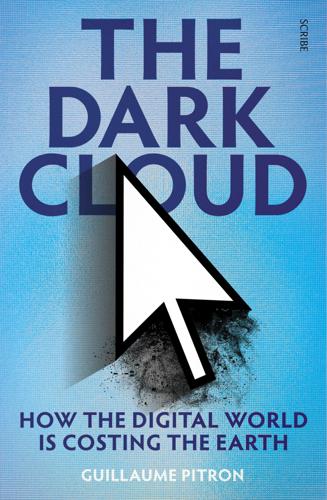
The Dark Cloud: How the Digital World Is Costing the Earth
by
Guillaume Pitron
Published 14 Jun 2023
We have built a realm of concrete, fibre, and steel that is hyper-available and at our command within a microsecond; our very own ‘infra-world’ of data centres, hydroelectric dams, coal-fired plants, and strategic-metals mines, all aligned in the triple quest for power, speed, and cold. It is also an amphibious realm, traversed by cableships and supertankers, and populated by businessmen, sailors, miners, computer scientists, builders, electricians, streetsweepers, and tanker escorts — men and women pitted against fascinating ecological, economic, and geostrategic challenges. They are the machinists of the digital exodus, and are braving the laws of physics so that billions of internet users are fooled into thinking that these very laws do not apply to them.
…
On top of this, the FAANGs wield enormous power and pressure on prices, squeezing the profit margins of their business partners, with the result that ‘few people are willing to take a gamble by investing in [them]’, according to an expert.59 On a global scale, the industry therefore works with no more than some 30 transoceanic cable-laying ships, divided primarily between three key players: the French company Alcatel Submarine Networks (ASN); the US company SubCom; and the Japanese company NEC.60 Added to this are the difficulties in recruiting young talent to the sector (the words ‘big data’ not featuring on the job description, laments a specialist), leaving it to shipowners who may struggle to stay afloat … ‘The global infrastructure relies on suppliers who are not particularly resilient’, according to the French consultant Bertrand Clesca.61 What would happen if they were to fall on hard times, lasting years, rendering them unable to honour their commitments?
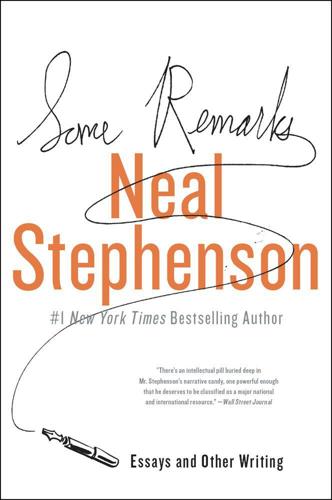
Some Remarks
by
Neal Stephenson
Published 6 Aug 2012
(Latitude & longitude unknown) Cable & Wireless Marine, Chelmsford, England [Note: I left my GPS receiver on a train in Bristol and had to do without it for a couple of weeks until Mr. Gallagher, station supervisor at Preston, Lancashire, miraculously found it and sent it back to me. Chelmsford is a half-hour train ride northeast of London.] When last we saw our hypothetical cable-ship captain, sitting off of Songkhla with 2,525 kilometers of very expensive cable, we had put him in a difficult spot by asking the question of how he could ensure that his 25 kilometers of slack ended up in exactly the right place. Essentially the same question was raised a few years ago when FLAG approached Cable & Wireless Marine and said, in effect: “We are going to buy 28,000 kilometers of fancy cable from AT&T and KDD, and we would like to have it go from England to Spain to Italy to Egypt to Dubai to India to Thailand to Hong Kong to China to Korea to Japan.
…
The notion of copper as a conductor for electricity, as opposed to a downspout material, was still extraordinary, and it was impossible to obtain the metal in anything like a pure form. The cable was slapped together so shoddily that in some places the core could be seen poking out through its gutta-percha insulation even before it was loaded onto the cable-laying ship. But venture capitalists back then were a more rugged—not to say crazy—breed, and there can be no better evidence than that they let Wildman Whitehouse stay on as the Atlantic Telegraph Company’s chief electrician long after his deficiencies had become conspicuous. The physical process of building and laying the cable makes for a wild tale in and of itself.
…
No visit to Egypt is complete without a stop in Cairo, but that city, the pinnacle of every normal tourist’s traveling career, is strangely empty from a hacker tourist point of view. Its prime attraction, of course, is the pyramids. We visited them at five in the morning during a long and ultimately futile wait for the Egyptian military to give us permission to rendezvous with FLAG’s cable-laying ship in the Gulf of Suez. To the hacker, the most interesting thing about the pyramids is their business plan, which is the simplest and most effective ever devised: 1. Put a rock on top of another rock. 2. Repeat (1) until gawkers arrive. 3. Separate them from their valuables by all conceivable means.
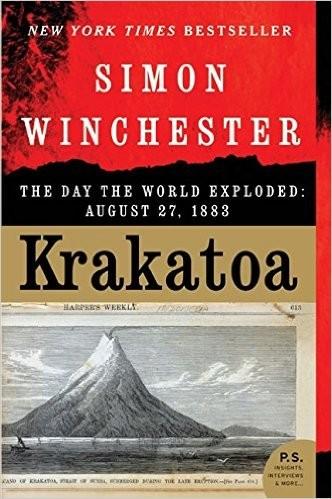
Krakatoa: The Day the World Exploded
by
Simon Winchester
Published 1 Jan 2003
The Santorini Volcano: Natural History and the Legend of Atlantis (Cambridge, Cambridge University Press, 2000) Geertz, Clifford, The Religion of Java (New York, The Free Press, 1960) Gilbert, J. S., and Sparks, R. S. J., The Physics of Explosive Volcanic Eruptions (London, Geological Society of London, 1998) Haigh, K. R., Cableships and Submarine Cables (London, Adlard Coles, 1968) Hall, R., and Blundell, D. J. (eds.), Tectonic Evolution of Southeast Asia (London, Geological Society of London, 1996) Hamilton, Warren, Tectonics of the Indonesian Region (Washington, DC, US Geological Survey, 1979) Helsdingen, W. H. van, and Hoogenberk, Dr H., Mission Interrup-ted: The Dutch in the East Indies and Their Work in the Twentieth Century (Amsterdam, Elsevier, 1945) Heuken, Adolf, SJ, Historical Sites of Jakarta (Jakarta, Cipta Loka Caraka, 2000) Hicks, Geoff, and Campbell, Hamish, Awesome Forces: The Natural Hazards that Threaten New Zealand (Wellington, NZ, Te Papa Press, 1998) Hillen, Ernest, The Way of a Boy: A Memoir of Java (London, Viking, 1993) Hobhouse, Henry, Seeds of Change: Five Plants that Transformed Mankind (London, Sidgwick & Jackson, 1985) Huntington, Samuel P., The Clash of Civilizations and the Remaking of the World Order (London, Simon & Schuster, 1997) Johnson, George (ed.), The All Red Line: The Annals and Aims of the Pacific Cable Project (Ottawa, James Hope & Sons, 1903) Kartodirdjo, Sartono, The Peasants' Revolt of Banten in 1888 (The Hague, Martinus Nijhoff, 1966) Keay, John, Empire's End: A History of the Far East from High Colonialism to Hong Kong (New York, Scribner, 1997) Kemp, P.
…
Thomas (American brig) 157 Arabia 14, 40, 74, 331, 333, 339 Arabian Sea 190, 191 Arabism 331 Arabs 22, 40, 144, 325, 331, 332 Archer (Australian passenger steamship) 157 Arctic 24, 79, 80, 85 Arctic Circle 80 Aristotle 371 Arles, France 40 art 282–5 arthropods 369 Ascroft, William 284–5, 290, 291 Asia 13n, 21, 42, 68, 74, 112, 116, 271 Asia Plate 317, 320 Asians, Portuguese-speaking (Mardijkers) 44 asthenosphere 109 Athens 34 Atlantic Monthly 220n Atlantic Ocean 14, 19, 59, 67, 87, 97n, 105, 107, 196 Atlantis 73 atmospheric pressure 268 Australia 55, 64, 65, 69, 74, 114, 115, 116, 189, 319 Australian Oceanic Plate 316–17, 320 Avallone, M. 394n Azores 306 Backer, Cornelis Andries 364–7 Bacon, Francis 72n Baird, Major A.W. 276 Baker, Diane 394 Bali, Balinese 17, 44, 55, 66, 69 manuscript style 127 bombings (2002) 343 Balkans 112 ballooning spiders 356–9, 357, 361–2 balloons 72 Baluchistan 190 Banda, sultan of 32 Banda Islands 23, 31, 33 Banda Sea 29 Bandung, Java 153, 376, 377, 379 Bangkok 264 Bangladesh 331 Banjoewangie, Java 189 Banka Island 148 Banks, Sir Joseph 120 Banquey Island, near Borneo 265 Bantam, Java 25, 126, 237 Bantam, king of 121 Bantam, Resident of 167 Banten, Java 201 a pepper port 15, 29, 322 skirmish with the fleet from Goa 18, 19 described 20–21 flood destruction of 1883 127 piety of the people 325 Islam established 332 the haj 333n signs of the Mahdi's imminent arrival 336–7 Banten, Java, sultan of 17, 31, 34, 35, 40 Banten Peasants' Revolt (1888) 331 importance of 323–4 Islamic-inspired and Islamic-led 340 attack on Sanedja 340–41 Dutch repeating rifles finish the rebellion 341 the hajis' victims 341–2 fades in popular memory 342 and Indonesian independence 342 a warning of future events 343 Bantenese 321, 332, 333, 335, 338 Barents Sea 24 Barnum & Bailey 243n barographs 267–70, 274, 275 barometers 267, 270 barometric pressures 293 basalt 84–8, 96, 102, 104, 112, 113, 297, 306, 308, 319 Batavi tribe 37 Batavia (Dutch steamship) 231 Batavia (previously Jayakarta, then Jakarta) 6, 28, 145, 172n so-named by the Dutch 36, 37 concentration of scientists in 36 Dutch proud of 37 Dutch compelled to leave (1949) 38 golden era 38 Dutch building 39–40, 41–2 the VOC 42, 47, 135, 139 employment in 42–3, 45 population 44, 144 Town Hall (Stadthuis; now Jakarta History Museum) 46–7, 142 Dutch life in 135–6 and war with Britain 139, 141 becomes a capital city 141 old Batavia closed down 141–3 new Batavia 141, 142, 143 communications 146–7, 196, 197, 225, 226, 237, 264n gasworks 147, 217–19, 218, 233, 248, 252 iceworks 147 's Jacob appointed governor-general 148–9 the circus visits 199–201, 201, 321 Plant and Animal Garden 201–2 clubs 202–4, 203 receives information from Anjer (August 1883) 215 air waves arrive in 233 four gigantic explosions 233–5 sounds not heard by everyone 266 tide-meter 277–8 change in temperature after the eruption 293 Batavia Standard Time 219, 248 Batavia Castle 51, 135, 142 day-register 49, 50 Batavia Cricket Club 205 Batavia Magnetic and Meteorological Observatory 154, 162, 216 Batavia Port Authority 157 Bates, Henry Walter: ‘On Coleopterous Insects Frequenting Damp Places' 58 bathymetric survey data 105 Batuwara, Mount 125, 126 Bay of Bengal 18n, 191 Bay of Biscay 192, 281 Bay of Naples (Welsh cargo vessel) 231, 299 Beale HMS 60 beetles 58, 60 Behaim, Martin 22 Belfast 220 Belgium, Kingdom of 29n Bengalen 49 bentonite 297 Berbice (German paraffin-carrier) 223 Berdichew, Poland 190 Berkowitz, Rickey 379 Berlin 190 Berouw (paddle-steamer) 230, 231, 251, 255–8, 256, 259 Beyerinck, Mrs 165, 166, 226–9, 251 Beyerinck, Willem, controller of Ketimbang 156, 165, 166–7, 176, 226–30, 245, 246, 247, 251 Billiton Island 148 Billiton Tin Company 148 Bintaing (hopper) 157, 245 biogeography 54, 73 biology 54, 69, 369, 372 biosphere 302 biota 54 birds geographical distribution 54–6, 64 Wallace's collection 60 repopulation of Krakatoa Island 360 sent to Europe 155 on Anak Krakatoa 370–71 Bird's Head, New Guinea 309 Bishop, Reverend Sereno 285n, 290 ‘Bishop's Rings’ 285, 289 Black Sea coast 190 Blaeu, John 25 Blair, Lawrence 395 Blair, Lorne 395 Blavatsky, Helena 53n Blosseville Coast 80 Blundell D.F. 52 Bogor, Java 142n Bogota, Colombia 273 Boing (a guide) 380, 386–9 Bombay 90, 191, 270, 276 Bonaparte, Louis, King of Holland 141 Bonney, Thomas 273n Borjild (Norwegian barque) 230–31 Borneo 22, 23, 66, 69, 132, 137, 188, 272 Borobudur temple, Java 123n, 142n Bo'sun's Rock (Bootsmans Rots) 346, 348, 383, 387 botany 54, 187, 354n, 364, 372 Bothwell Castle (ship) 299 Brani (ship) 285 Brazil 13n, 14, 71, 148, 224 Brazzi, Rossano 394 Brewer, W. 196, 197 Brewer's Dictionary of Phrase and Fable 199 Bristowe, William Syer 361, 368 Britain, British and Pulau Rann competition with the Dutch 29 official sanctioning of trading cooperatives 30 colonial intentions for Java and Sumatra 34 and the Portuguese 34 abandons siege of Ambon fort 35 Runcorn's rock magnetism studies 92 at war (1780s) 139, 141 presence on Rodriguez 261–2 on the Andamans 265 in India 326 imperialism 334 see also England British Army 35 British Empire (ship) 285 British Ornithologists' Club 53 British-Australian Telegraph Company 189 Brito, Don Lourenzo de 18 Bromo, Mount, Java 48, 155, 303 Brunhes, Jean 96 Brussels 195 Buddhism 123 Buenos Aires 289 Buffon, Comte de 72n Bugis 137, 138 Buijs, Thomas 211n Buitenzorg, Batavia 144, 146, 147, 150, 152, 201, 266 Botanical Gardens 148, 224, 364, 367 Bullard, Teddy (later Sir Edward) 90 Burma 34n, 44 butterflies 58, 60 Button Island 222 Byron, George Gordon, Lord: ‘Darkness’ 295–6 Cabele & Wireless 100 Cabral, Pedro Alvarez 13–14 Cailendra Dynasty 123, 134 Cailendra Seven 123 Cairo 116 Calais 187 Calapa 25 Calcutta 276, 280 Calicut 13 California 13n, 290, 295 California Institute of Technology (Caltech) 93 Calmeyer Island 314, 347n Calvinism 33 Cambodia 34n Cambridge University 105, 276 Cameron, Consul Alexander Patrick 152, 235–9, 236, 259, 260n, 272 Canada 290 Canary Islands 289 Cape Colony, southern Africa 34n Cape of Good Hope 14 19 30 Cape Mendocino, California 93 Cape Race 196 Cape Town, South Africa 281 Cape Verde Islands 13n caitalism 30 carbon 302 carbon dioxide 243, 301, 302, 317 carbon-14 isotope 134 Carcavelos, Portugal 191 Cargados Carajos 280 Caribbean Signal Service 287 Carita Java 373, 375, 379–80 Carita Beach Hotel 390 casowaries 116, 137n Caucasus 112 Cavendish, Sir Thomas 34 Cayman Brac 265 Celebes 23, 66, 69 Central America 133 Cerro Hudson volcano 308 Ceylon (later Sri Lanka) 11, 22, 264 Ceylon Observer 279 Chacana volcano, Ecuador 308 Chamberlin, Thomas 76 Champa Kingdom, Vietnam 128 Channel Four 133n, 395 Charles Bal (cargo-carrying barque) 220, 246, 299 Chaumont Bay, Lake Ontario 283–4 Chefoo (later Yantai), China 287 Chelsea, London 284, 290, 291 chemistry 305–6 chemolithoautotrophic hyperthermophilic archaebacteria 367n Cherbourg 282 Chile 13n, 289, 308, 309 China, Chinese 22 and spices 10 rule of Macau 19 mapping 23, 24 coolies 42, 213, 228 merchants 42 Coen and 42–3 Batava population 44, 144, 215 and tectonic plates 111 and possible eruption of AD 535 131 records of sea captains 131–2 anti-Chinese riots (1998) 138 and the 1883 eruption 215, 246–7, 250 China Overseas Shipping Company (COSCO) 381 Christianity, Christians and the 1883 eruption 163 and Muslims 32 Protestant 44 Christie, Mr (in Ceylon) 264 Christmas Island 89, 114 Church, Frederic Edwin 283–4 Niagara 283 Sunset over the Ice on Chaumont Bay, Lake Ontario 284 Twilight in the Wilderness 283 Ciliwung River 34, 38, 39 cinnamon 18, 31, 330 Ciparis (Sylbaris), Louis-Auguste 243n Claw, Iceland 82 Cloos, Hans 75–6 cloves (Syzygium aromaticum) 10, 11, 18, 29, 31, 65, 297n, 330 Cochin 11 cochineal 330 cockatoos 55, 65, 65, 66, 68, 137n cock's tail' jets 352 Cocos (Keeling) Island 114, 190n Coen, Jan Pieterszoon 33, 142 appearance 32 personality 33, 35 founder of the Dutch East Indies 33–4, 36 governor-general of the East Indies 33, 34 decides to eject the British 34 and the Chinese 42–3 coffee 10, 141, 148, 182, 188, 238–9 Cold War 106–7, 266, 275 Coleoptera 58 College of Delft 156n Collocalia 21 Cologne Cathedral 297 Colombia 308, 309 Colombo 288 Columbia University 107 Compagnie van Verre 15 Concordia Military Club, Batavia 147, 153, 172, 202, 203–4, 203 Conrad (Dutch mailboat) 157, 167–8 Conrad, Joseph: Lord Jim 12–13 conservative plate boundary 113 Constantinople 10 continental drift 171 Wegener's theory 71–8 in basalts of east Greenland 87 and convection 90, 91, 97–8 and earth's magnetism 92, 97 dating of 97 and plate tectonics 91, 101, 315 reacceptance of 101, 102 Wilson's conclusions 104–5 Jeffreys opposes the concept 304n continental plate collision 112–13, 307 continental shrinking 73 continental tectonic material 112, 113, 114 controllers 156 convection 90, 91, 97–8, 109, 302 Cook, Captain James 119–20, 121, 122, 298, 354 Copenhagen 80, 82, 196 Cotopaxi volcano, Ecuador 308 Cotteau, Edmond 356, 358, 360 ‘ country trading' 31–2 Court Javanese language 124n, 127 Creole language 261 Cressonnier, Louis 208, 209 Cretaceous Quiet Zone 96 Crete 244 Cribb, Robert: The Historical Atlas of Indonesia 28n cricket 153 Crimea 190 Cuba 265 Culemborg bastion, Sunda Kelapa 137 Curie, Pierre 92n Curie point 84, 92n currency 11, 14 cycad 365n da Gama, Vasco 13 Daendels, Herman Willem 141–2, 143 Daily Eagle 291–2 Dalby, R.J. 175 Daly Waters, south of Darwin 264 Damavand, Mount 112 Dammerman, Karel 367, 369 Danan cone, Krakatoa xv, 121, 158n, 318, 347 erupts (August, 1883) 176, 177 disappearance of 313, 346 Danes 196 Dark Ages 133 Darwin, Charles 61, 276 pioneers evolution science 57, 62, 63 natural selection theory 59 Wallace influences 60–61, 62 Wallace's loyalty to 63 On the Origin of Species 58, 62 Darwin, Sir George 276, 305n Darwinism 63 Day, Arthur Louis 304–5 Dayaks 265 de Vries, Mr (a pilot) 214–15 decibel-meters 266 declinometer 162–3 deer 65, 66, 146 Dekker, Eduard Douwes (‘Multatuli’) 328, 330 Max Havelaar 328, 329, 330 Delft Technical University 88 Demak, Java 332 Denmark 290 Denmark Strait 80 Descartes, Rene 305 Deventer, central Holland 337 Devonport 282 Dewey, John 105, 106 Diamond Head, Oahu 102 Dickinson, William 107n Diego Garcia 53, 263–4 Disappearing Island 102 Discovery, HMS 121 Djaman, Umar 324 Dover 187, 282 Dowd, Charles 219n Down House, Downe, Kent 62, 64 Drake, Sir Francis 34 duck-billed platypus 65 Dumas (a clerk in Sanedja) 340 Dumas, Mrs 340, 341 Durant, Will 301 Durban, South Africa 281n dust particles 285–6 Dutch builds Anjer lighthouse 3, 258–9 spice trade 12, 14–16, 23, 141 Portuguese driven out 15, 19, 29 first expedition to Java 15–18 first treaty with Java 16 relations with the local population 16, 17, 32, 323 Dutch fleets start to go East 19–20, 29 cartographers 21, 23, 27 outposts run from the Javanese HQ 34n and Indonesian independence 38, 342, 380n building of Batavia 39–40 and slavery 42 Batavia population 44 Treaty of Paris 139, 141 guerrilla war in Aceh 147 response to impending eruption (1883) 164 dual administrative rule 253n relief operations after the 1883 eruption 321, 323 momentary faltering in the region 327–8 impact of Max Havelaar 328 Kultuurstelsel (Cultivation System) 328–9, 333 Ethical Policy 330 reforms after the Peasants' Revolt 342 Dutch Cemetery, Madaascar 16 Dutch Colonial Police 339 Dutch East Indies (later Indonesia) Coen founds 36 slavery abolished 44 Wallace's fascination with 59 Dutch government takes charge (1799) 141 and submarine telegraph cables 189 Dutch-Javanese relations 212 revolts and restlessness in 326 Kultuurstelsel 328–9 Ethical Policy 330 Dutch East Indies Post and Telegraph Office 186 Dwars-in-den-weg/Thwart-the-Way Island 237–8, 260 earth gravitational field 88–91, 301 magnetism 91, 95 hotspot 103 siting 301 size of 301 heat and thermal decay within 302 earthquakes 112–13, 154, 162, 207, 208, 242n, 243, 246, 268, 318 East Africa: rift valleys 306 East Anglia 190 East India Company 47 East Indies 2, 29, 31, 32, 54, 59, 139, 325, 326 East Pacific Rise 308 Easter Island 308 Eastern Telegraph Company 189, 193, 197 ecological interdependence 271 Ecuador 308 Edinburgh (cable-laying ship) 189 Ega, Brazil 58 Egeron (ship) 170, 171 elephants 116, 307n Elisabeth (German warship) 157–60, 183, 213 Emden (German surface raider) 190n Emden, Germany 190 England 290 spice trade 12, 14 see also Britain English Channel 276, 282 Enkhuizen 20 Equatorial Smoke Stream 290 Eskimos 82 ethogeological prediction 207 Etna, Mount 112, 303, 393 Eugenia caryophyllata 10n Eurasian Plate 112, 116 Eurasians 144 Europe, Europeans 74 invasion by barbarians 133 drowned in the eruption of 1883 238, 252 temperature 295–6 expulsion from the region (1949) 325 Evelina (ship) 280 evolution science 57 62, 63, 64 Ewing, Maurice 90 Faeroes 87 Faircloth, Captain 287–8 Falkland Islands 111 Falmouth weather observatory 270 Far East 24, 26 Ferzenaar, Captain H.J.G. 176–8, 177, 207 Fiado (British steamship) 202 Fielder, Mr (in Ceylon) 264 Fingal's Cave, Staffa 84 First Point, Java 155, 161n, 185, 220, 299 Fiske, Richrd S. 396 Flat Corner, Java 170 Flint, Dr Earl 287 Flores 19, 29 Foley (on Cayman Brac) 265–6 Folkestone Harbour 191 Forbes H.O. 175 Forbes (tea-planter) 168 Formosa 34n Fort Speelwijk, Java 20, 21 Fourth Pacific Science Congress (Batavia, 1928) 350–51 Fourth Point lighthouse, Anjer 221, 234, 238, 258–9, 260, 321 France, French 197 makes peace with Britain 139n sugar plantations 261 imperalism 334 Franklin, Benjamin 294 Freuchen, Peter 79 Friesland 29n, 44 Fujian province 42 Fukoto Kuokanaba 384n fumaroles 176–7 Furneaux, Rupert: Krakatoa 316n, 396 gabbros 297 Galapagos 60 Galeras volcano, Colombia 308 Galileo Galilei 77–8 Galle, Ceylon 31, 279 Galton, Sir Francis 63 gamelan orchestras 124, 227 Gede volcano (Kamula), Java 126 Geikie, Archibald 273n Genesis, Book of 69 geography 54, 187 Geological Society of London 304,315 Geological Survey of Indonesia 375 geology unpredictable nature in the East 36 Wallace and 66–8 and religion 69 Georia 190 Gérard, Max 344 German Imperial Navy 159 Far Eastern Station 157 Germany 197, 295 Giant's Causeway, County Antrim 84 Gibbon, Edward 10 Gibraltar 191, 325 glaciers 244 Gladstone, William Ewart 236 Glasgow weather observatory 270 Global Positioning System 319 global village, birth of 6–7, 184–5, 198 lobal warming 271 Glodok, Jakarta 138 Goa 16, 18, 19, 25, 29 Gogh, Vincent van 40, 329 Gondwanaland 72n, 73–6, 74, 90 Gouverneur-Generaal Loudon (excursion vessel) 172–4, 213–14, 216, 219, 228, 234, 245–6, 251, 256, 257, 299, 337 Graaff-Reinet, South Africa 287 Granville, Earl 236, 236 graptolitic shales 73 gravimeters 89, 101 gravity 88–90 Great Chain of Being 371–2 Great Northern Telegraph Company 196 Great Plague 133 Great White, The 83 Greeks 303, 304 greenhouse gases 271 Greenland 74, 81 Wegener in 72, 76–7 Oxford University expedition 79–86, 91 volcanic 83 basalts 83–8 proof of continental drift 87–8 acid snows 133 ice-cores 308n Greenlandic language 81 Greenwich Mean Time 275 Greenwich Observatory 270, 275, 282 Gresik, east Java 332 Grytviken whaling station 281 Gubbels, Dora 341 Gubbels, Elly 341 Gubbels, Johan Hendrik 341 Guild of Pepperers 12 Gulf of Mexico 289 gutta-percha 187, 189 Haag (Dutch barque) 157 Hades 303 Hadhramaut Yemen 339, 342 haj 332, 333 Halifax, Nova Scotia 196 Hall, R. and Blundell, D.J.: Tectonic Evolution of Southeast Asia 52 Halmahera 61 Hambantota, Ceylon 279 Hamburg, Mr (ship passenger) 174 Hammersley Range, western Australia 264 Handl, Johann 360–61 Handl's Bay, Krakatoa Island 356 Hapsburgs 29n Harmonie club, Batavia 147, 153, 172, 202–3 Hastings-on-Hudson, New York 274 Hatfield, Oscar 152, 234 Haughton, Mr (in Ceylon) 287 Hawaii Island (Big Island) 102, 103, 104 Hawaiian Islands 102–5, 121, 306, 354n Heims, Father 159–60 Helen (a square-rigger) 59 Her Majesty K II submarine 89 Her Majesty K XIII submarine 89 Hermak, Baluchistan 190 Hess, Professor Harry 90, 91, 92, 97–100 ‘ History of Ocean Basins’ 98n Hesse, Elias 49–50, 135 Hevea brasiliensis (Brazilian rubber) 224, 225 Hibernia (converted cargo ship) 189 High Court, London 263n Himalayan Mountains 74, 112 Hinduism 128, 332 Holland 29n, 44 see also Dutch; Netherlands Hollandsche Thuyn (long-rangepacket) 48 Hollmann, Captain 158–9 Hollwood 113, 393, 394 Holtan community 132 Holtum, John (‘Cannonball King’) 205–6 Holy War (perang sabil) 336, 337, 340, 342 Homo erectus 116 Hondius, Henricus 25 Hong Kong 220, 278 Honolulu 289 Hooghly River 276 Hooker, Sir Joseph 62, 63 Hoorn, Zuider Zee 20, 33 Hope (a barque) 175 Hopkins, Gerard Manley 288 Hôtel des Indes, Batavia 206, 207, 208–9 hotspots 103, 104, 347n House of Orange 151 Houtman, Cornelis de 15–18 Houtman, Frederik de 15 Huaynaputina volcano, Peru 308 Hudson, USA 283 Hudson River School 283 Hudson's Bay Company 30 human sacrifice 303 humongous explosion 309, 312 Hurgronje, Snouck 41, 333–4 Hutton, James 69 Huxley, Sir Thomas 63 hydrochloric acid 243 ice cores 129, 131, 133, 296, 308n Iceland 82, 96, 306 Illustrated London News 155n Imperial Beacons & Coastal Lighting Service 170 India 11, 13, 22, 24, 40, 44, 55, 74, 112, 144, 191, 197, 276, 280, 325, 326, 331, 332 India Rubber, Gutta Percha & Telegraph Works Company 187–8, 197 Indian Mutiny 326n Indian Ocean 2, 21, 53, 114, 161n, 182, 182, 231, 261, 264, 278, 280, 285 indigo 330 Indo-Australian Plate 111, 115, 116 Indonesia (formerly Dutch East Indies) xiv, 63, 68, 116, 137, 145–6, 308, 309, 325, 331 independence 38, 342 International Date Line 112, 219n International Meridian Conference (Washington, DC, 1884) 219n Io 302 Iran 112, 331 Ireland 188, 196, 264 Irian 55, 61 iron oxide compounds 84, 85 Isla de Pascua 308 Islam Sumatra and Java Islamicized 17 rigid formalisms 32 local form of 40–41, 332–3 orthodox 40, 41 birth of 133 and the 1883 eruption 321 becomes entwined with local political developments 325 power of 325 upsurge in Islamic zealotry in the East Indies 325 stand against colonialism 327 number of Muslims in Indonesia 331 an imperial religion 331 collision with the West 331 first comes to the East Indies 331–2 the haj 332, 333 threatened by Western imperialism 334 fundamentalism 339 Isonandra gutta 187 Istanbul 378 Italy 22, 242 I wo Jima 384n ‘s Jacob, Governor-General Frederik 148–9, 149, 150–53, 169, 172, 201, 215 ‘s Jacob, Leonie 151 Jakarta History Museum, Java 46n Jakarta (previously Jayakarta and Batavia) 2, 21, 38, 126, 137, 373, 379 Jakarta Radio 9 James I, King 12 Jammersley Range, New Guinea 264 Japan 34n, 42, 44, 196, 244, 308, 309 Java 1, 2, 6, 7, 66, 78, 242 coffee 10, 141 spice-trading 10, 11, 31 first treaty with the Dutch 16 colonization 16 Islamicized 17, 40 mapping 22, 24 British colonial intentions 34 described 40–41 and slavery 44 volcanic 83 and the Java Trench 89 volcanically unstable 114–15 splits from Sumatra 126, 155 anti-Chinese riots 91998) 138 earthquakes 154 response to impending eruption (1883) 164 and gutta-percha 188 explosion sounds not heard by all 266 number of active volcanoes 309, 326 attacks by white-robed figure 323–4, 325, 337 First Military Region 324 Islam 325, 342 mysticism 327 Java Bode 162, 255 Java Head 155, 161n, 182, 220, 231, 379n Java Major 25, 25, 26 Java Man 116 Java Minor 22 Java Pars. 27 Java Sea 45, 172 Java Trench 89, 111, 114 Javasche Courant 153 Jayabaya 128 Jayakarta (later Batavia, then Jakarta) 34, 38 Jeffreys, Sir Harold 76, 304 jetstream 290 Jogjakarta, Java 2, 153 joint-stock companies 30 jökulhlaups 244 Judd, John 315–16 Volcanoes 315 Julius II, Pope 13n Jupiter 302 Jurassic period 96 Kaimeni 347 Kamchatka Peninsula 309 Kamula volcano, Java (Gede) 126 kangaroos 65, 65, 116, 137n ‘Kapi, Mount’ (in Ranggawarsita's history) 125, 126, 129 Karachi 190, 280 Karim, Haji Abdul 334–5, 337, 338, 339, 341 Kartodirdjo, Sartono: The Peasants' Revolt of Bantenin 1888 322 Katmai, Mount, Alaska 5 Kauai Island 102–3, 104 Kaula 102 Kavachi 384n Kedirie (ship) 299, 313 Keith, Brian 394 Kennedy, Henry George 235, 272 Kerala 44 Kerm-an, Teheran 190 Kertsch, Crimea 190 Ketimbang, Sumatra 156, 164–5, 167, 226–30, 233, 245, 251, 259 Kew weather observatory, Surrey 270 Keys, David: Catastrophe 132, 133, 134,395–6 Kilauea: Halemaumau Crater, Hawaii 1093 Kinematics, Inc. 376, 378, 386 King of the Netherlands, The (steam-yacht) 323 Kiribati, Republic of 100 kites 72 Kittery Island 102 Knossos, Crete 244 Koeripan River 256, 257, 258 Kokkulai, Ceylon 287 Kosrae Island, Pacific Micronesia 298 Kowalski, Bernard 394 Krakatoa archipelago 379 Krakatoa Committee, Royal Society 272–3, 275, 276, 286–7 Krakatoa, East of Java (film) 2, 394–5 Krakatoa Iron & Steel Works 340n Krakatoa Island present remains of 1–2 van Linschoten describes 25–6 first mentioned by its current name 27 derivation of the name 27–8 cultivation 120–21 lush coastal jungle 122, 354–5 Schuurmann describes 173 Ferzenaar visits (August 1883) 176–8 disappearance of 178, 237, 239, 240, 260, 300, 337, 338 surrounded by small faults and zones of weakness 320 purity after the 1883 eruption 355–6 repopulation of 356–66, 372 Krakatoa Islands xv Krakatoa Problem 364, 366 Krakatoa Time 219, 248, 275 Krakatoa Volcanic Observatory 375, 376, 389 Krakatoa volcano (general refernces) see also Danan cone; Perboewatan cone; Rakata cone and the Wallace Line 57, 64 notoriety 68, 116, 286, 393 number of eruptions 117–18 ruins compared with Anak Krakatoa 353, 354 Krakatoa volcano ( possible eruption of AD 416) 123–9, 133 Krakatoa volcano (the confusions of AD 416 or AD 535) 129–31 Krakatoa volcano (the likely eruption of AD 535) 123, 131–4 Krakatoa volcano (the near-certain eruption of 1680) 123, 134–9 Batavians and seamen unaware of potential danger 45–6 first recorded eruption 46, 47 Vogel's report 48–9 Hesse's report 49–50 Schley's painting 138–9, 140 Krakatoa volcano (before the certain eruption of 1883) 139–49 Krakatoa volcano (eruption of 27 August 1883) 4–5, 28, 123, 134, 209 the event 210–39, 240 the effects 241–61 the experiences 261–321 death statistics 5, 313 telegraphy 5, 7, 28n, 146, 167,184–7, 192–4, 215 undersea cables 5, 6, 184, 187, 189 lack of geological knowledge at the time 5–6 religious fears 6 and birth of global village 6–7 impact on climate 7 a Plinian eruption 12 and subduction zones 111 Banten flood destruction 127 warnings of forthcoming eruption 154–63 Perboewatan erupts 167–9, 175, 176, 180, 184–5, 193–4 excursions to visit 172–4 Danan erupts 176, 177 statistics of deaths and injuries 242 the sound of 262–8 progress of the shock waves 273–5, 313 art and 282–5 and temperature 293–6 floating bodies 296–300 existed above a large chamber of magma 318–19 burial of the dead 321, 322 rebuilding after 321, 323 political and religious consequence 321, 342–3 reluctance to settle near the volcano 379 Kramat 260 Kultuurstelsel (Cultivation System) 328–9, 333 Kurile Islands 309 Kurrachee 276 Kyoto 297 Labuan, Java 337 lahars (volcanic mud and water slurry) 243 Lakagígar (Hekla), Iceland 294 Lamongan 155 Lampong Bay 166, 216, 219, 228, 234, 247, 249, 250, 251 Lancaster, James 34 Lang Island, Krakatoa (previously Panjang, now Rakata Kecil) xv, 118n, 158n, 314, 318, 354 Laos 34n Lascar volcano, Chile 308 Laurasia 73, 74, 75 lava flows 369 Laysan Island 102 Le Havre 282 Leicestershire 57, 58 Lemuria 53n Liciala spinosa 355 Lincoln, President Abraham 196, 219n Lindeman, Captain T.H. 173, 174, 216, 219, 230 Linnean Society, Burlington House, Piccadilly, London 52–3, 54, 62, 64, 65 Linschoten, Jan Huyghen van 23–6, 26 Itinerario 24, 25 Lippincott Gazetteer 190n Lisbon 14, 15, 191 Lisianski Island 102 lithosphere 109–10, 302 Llaima volcano 308 Lloyd's of London 161, 168, 180–83, 186, 193, 232, 261 Committee 182, 197 Foreign Intelligence Office 193 Lochart, Nanette 208, 209 Locomotive 151 Lodewijcksz, Willem 25, 26 Logan, Captain William 223–4 Lombok Island 61, 66, 69 Lomu, Jonah 384n London 19, 179–80, 189, 190, 191, 196, 197, 270, 284 London Station 193 Londonderry 196 long waves 278, 279–80 Los Angeles 200 Luzon 24 Lyell, Sir Charles 62, 63, 69 Macassar, Celebes, Macasserese 31, 44, 265, 326 Macau 19 McColl, Mr (Lloyd's agent) 181, 259–60 mace (aril) 11, 18 MacKenzie, Captain 157, 161 McLuhan, Marshall 184, 198 Madagascar 16, 53 Madras 190, 191, 280 Madura 17 Magellan, Ferdinand 23 Magellan Strait 19 magma 84, 103, 104, 305, 315, 316,318–20 magnetic airborne detector (MAD) 93n magnetism and basalts 84, 85 moon's surface 100 remanent 91–2, 96, 97, 102 underwater 93–5 magnetite 84–5, 85, 92n magnetometers 93–6, 97, 101, 107 Magpie, HMS 265, 272 Mahdi 322, 335, 336, 337, 342 Malabar Coast 11 Malacca 11, 18, 22, 29, 34, 44 Malaku 61 see also Moluccas Malay Archipelago 59, 60, 190 Australian (eastern) end of 55, 64, 65 Indian (western) end of 55, 64, 65 Wallace's preferred term 59 Malay language 59 Malaya peninsula 22, 24, 29, 31, 40, 53, 190, 326, 331 Maldives 23 Malta 191 Manchester Literary and Philosophical Society 294 Manchus 157n Manhattan, New York City 295 Manila 196, 264 Manley, Reverend W.R. 288 maps 21–7, 26, 155 Mardijkers 44 Marie (Danish salt-carrying barque) 219–20, 230, 234, 246 Mars 302 Mason, Ron 93–5 Massachusetts Bay Company 30 Mataram sultan of 40 Matuyama, Motonari 96 Maui Island 103 Mauk 260 Maurice of Nassau, Prince 16n Mauritius 16n, 34n, 261, 263n, 270 Maan civilization 133 Mayon, Mount 266 Mecca 332–5, 336, 337, 342 Mecca's Plain of Arafat 333n Medea (British ship) 216, 231 Mediterranean 14, 23, 191 Mediterranean region 133 Mekong 24 Melbourne 270 Merak, Java 160, 222, 225, 238, 246, 249n, 250, 252–3, 259, 260, 337 Merapi, Mount 48, 155 Merbapu, Mount 48, 155 Mercator, Gerardus 71 Merchant Adventurers 30 Merchant Staplers 30 Meteorological Council 270 meteorology 70, 76, 275, 290.

The Cable
by
Gillian Cookson
Published 19 Sep 2012
The company had spent $350,000 and had nothing to show for it. Peter Cooper tried to cheer Field, as he was optimistic that the lessons learned had been valuable ones. Success could not be far away. They now knew that it was impossible to use a vessel such as the Bryant, without its own steam power, on such a mission. The cable-laying ship needed its own steam, to better regulate its motion and speed, manoeuvring as the sea rose and fell so that the strain on the telegraph line was never too great nor too small. A year after the very public defeat of 1855, the links from St John’s were finally completed, with little fanfare. The ship Propontis had been fitted out for the purpose.
…
Canning was engineer on the Great Eastern, assisted by Clifford; chief electrician was Charles de Sauty, who had been involved almost from the start in the Newfoundland lines and was also the man who had struggled alone in the telegraph station there as the 1858 cable died. Because of the great size of the cable-laying ship, the landing points at both sides of the ocean had to change. Instead of Valentia harbour, the cable would leave from Foilhommerum Bay five miles away, overlooked by a tower built by Cromwell after the English Civil War. In Newfoundland, Field had found an alternative landing, a deep but sheltered spot near the open sea called Heart’s Content.

Tubes: A Journey to the Center of the Internet
by
Andrew Blum
Published 28 May 2012
But the station was also hosting a pair of technicians from Tyco headquarters in the United States, who had been working around the clock on the final commissioning of WACS’s direct competitor, the Main One cable, which followed nearly the identical route. They had been on call around the clock, waiting for direction from Tyco’s cable-laying ship, the Resolute, bobbing somewhere off the coast of Nigeria, the cable hauled up into its workshop, as its own technicians struggled to get out the kinks. And on top of all that, Tata brass had been pushing Carrilho to complete upgrades on the station’s third cable, which ran beneath the Bay of Biscay to England, crossed AC-1 somewhere in the deep, and landed at another large former Tyco station near Bristol.
…
A square of sand the size of a beach blanket had been scraped away to reveal a manhole, opening into a concrete vault. The manhole cover was stamped “Tyco Communications.” The vault had been dug a decade earlier in preparation for a cable that never arrived and had sat empty since. A red tent had been erected beside it, to house a temporary workshop. The next day, the cable-laying ship Peter Faber—specially designed for “near-shore operations”—would steam over from Lisbon with two miles of cable in its hold. It would be dragged up on the beach by a diver and affixed to a heavy steel plate inside the manhole. The Peter Faber would then head out to sea a couple of miles, turn slightly to the south, and drop the loose end over the side.

Kitten Clone: Inside Alcatel-Lucent
by
Douglas Coupland
Published 29 Sep 2014
For many, this reality is a curse, but for others, like Alphonse, it is a wonder. < br > It’s more than a hundred years later, and I’ve taken a TGV train (train à grande vitesse, or high-speed train), built by a company once owned by Alcatel, out of Paris to the Port of Calais on the north coast, where I’m now at Pier 9. I’m aboard a custom-fitted cable-laying ship, the Île de Bréhat, watching index-finger-thick, bubble-gum-pink fibre optic cables coil around and around within one of two four-man-deep coiling tanks. Imagine having to meticulously wind a mile of yarn onto a massive spool. That’s all that is happening here, except the yarn is 2,500 kilometres long, two thirds of an inch thick and weighs roughly a third of a pound per foot.

Fred Dibnah's Age of Steam
by
David Hall
and
Fred Dibnah
Published 1 Jan 2003
It’s a very sad picture – he’s not even got his tall shiner on and his cigar’s not going. He looks about seventy and yet he was only fifty-two years old at the time. He died shortly after the photograph was taken. The SS Great Eastern was jinxed from the start and never made any money. It had sailings to Australia and at the end of its life was turned into a cable-laying ship and laid the first cable across the Atlantic. There are some beautiful etchings of it with these great drums of cable inside. Then it went to Liverpool as a floating advertising vessel and finally to Glasgow. The sad fate of the SS Great Eastern came to an end in November 1888 when the ship was sold piecemeal at auction.
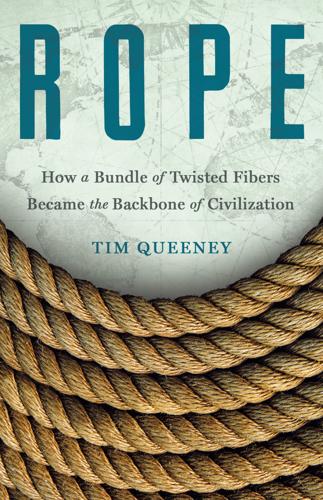
Rope: How a Bundle of Twisted Fibers Became the Backbone of Civilization
by
Tim Queeney
Published 11 Aug 2025
The cable was fished up and spliced and then the slow two-knot pace of spooling out the cable continued westward. Three hundred and thirty-five miles from Ireland, a mistaken use of the brake while laying the cable caused too much pressure and the cable parted again. The cable armada had no choice but to return to port. In June 1858 a second attempt was made. This time the two cable-laying ships, the Niagara and Agamemnon, sailed to the midpoint between Ireland and Newfoundland, spliced the cable together, and then Niagara headed west and Agamemnon east, each ship paying out cable. When the ships were separated by 300 miles the cable broke a third time. Not willing to give up the effort, the directors of the company authorized a third attempt.
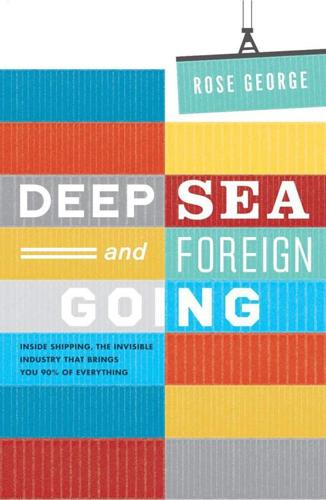
Deep Sea and Foreign Going
by
Rose George
Published 4 Sep 2013
He looks up sometimes from reading that poetry or working on his computer to see a window filled with a ship sliding by. Today, a wind-turbine ship slowly passes, heading for the North Sea where it will plant wind farms. It has four columns reaching 100 feet up which will drop beneath the ship when it begins its work, perching the ship above the water. ‘It’s amazing,’ says Colum. And it is. He also likes the cable-laying ship that passes through sometimes. Its crew gave the centre a varnished cross-section of cable which is kept behind the bar. It is about 30 centimetres tall, looks like the veins of a giant and is worth £3000. The ships keep him awake at night sometimes, but he loves this place. How could he not?
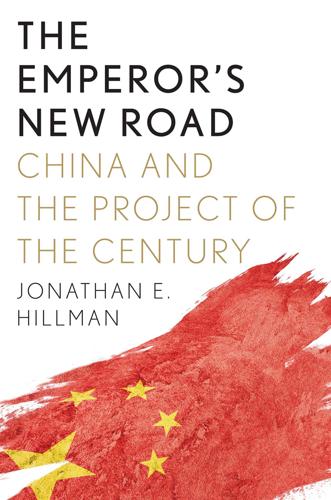
The Emperor's New Road: How China's New Silk Road Is Remaking the World
by
Jonathan Hillman
Published 28 Sep 2020
On August 5, 1914, a day after declaring war on Germany, Britain cut five of Germany’s telegraph cables, which remained disabled for the duration of the war.57 Britain’s advantages stemmed not only from owning and operating physical infrastructure but also from the abilities of its companies and the international standards they set.58 Britain’s largest telegraph company manufactured two-thirds of the cables used during the nineteenth century and almost half thereafter. In 1896, there were thirty cable-laying ships in the world, and twenty-four were British owned.59 Britain’s monopolizing the expertise to lay cables meant that its rivals struggled to repair damaged cables. What British officials did not foresee was the telegraph’s potential to fracture their empire from the inside out. The Indo-European telegraph cable, and the vast network of which it was a part, carried not only Britain’s colonial commands but also potent ideas for change.
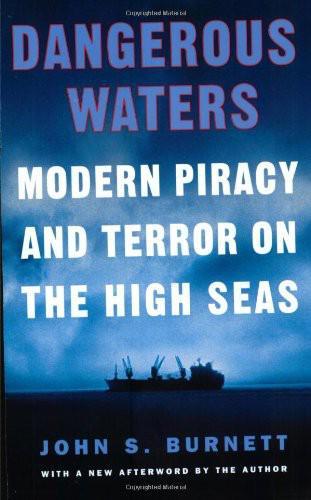
Dangerous Waters: Modern Piracy and Terror on the High Seas
by
John S. Burnett
Published 1 Jan 2002
In the days I spend with him, I am never to hear him utter a profanity; the only expletive is a “thank goodness” that he mutters into the telephone. It is when he learns that none of his men was injured in a shoot-out in West Africa. It comes during a call from one of his commandos aboard a cable-laying ship off the coast of Nigeria. “Our boys just repulsed an attack,” he announces after he hangs up. He looks thoughtful, smiles. “They win?” “They won. Communications with the field is the worst problem,” he says. “Sometimes we don’t know what is happening down there for a while; it worries the wives.”

The Wires of War: Technology and the Global Struggle for Power
by
Jacob Helberg
Published 11 Oct 2021
Cables can be as narrow as a garden hose or as thick as a person’s forearm. For protection from underwater earthquakes and even shark bites, the glass fibers are wrapped in layers of plastic and sometimes steel wire. The cables are then covered in metal mesh and thick rubber hosing and laid in trenches gouged out by cable-laying ships. These transoceanic cables emerge at landing stations, where the fiber-optic cables are fused to land-based cables and linked to a country’s Internet system. “People think that data is in the cloud, but it’s not,” says Jayne Stowell, who negotiates Google’s submarine cables. “It’s in the ocean.”65 Roughly a century and a half after that first copper connection under the English Channel, there are around 400 underwater cables crisscrossing nearly 750,000 miles of ocean floor.66 The longest runs some 24,000 miles, stopping at nearly 40 different landing points along the way—beginning in Germany, hooking around Spain and Portugal, traveling through the Mediterranean and the Red Sea, then hugging the coast of the Indian subcontinent on its way to twin terminuses in Korea and Australia.67 All together, these cables carry 95 percent of the world’s communications.68 And China is well on its way to controlling many of them

Atlantic: Great Sea Battles, Heroic Discoveries, Titanic Storms & a Vast Ocean of a Million Stories
by
Simon Winchester
Published 27 Oct 2009
The engines stopped briefly and we bobbed alongside a buoy until a fussy little white pilot boat chugged out to meet us, steered by an elderly-looking black man; the pilot himself, young and breezy and in a newly pressed uniform, leapt aboard and was up on the bridge in moments, steering us to our anchorage in the Victoria and Alfred36 Dock—the only structure of any note that ever sought to mark Cape Town out as a landmark Atlantic port. The Chamarel, a French-built cable-laying ship, happened to be in dock, busy with preparations to sail, taking on immense coils of fiber-optic wire to string along the West African coast. Some years before the ship had helped lay the immense SAT-3 line, running six thousand miles between Portugal and Cape Town, and since it broke down quite often she was now on near-constant patrol to help keep it in service.
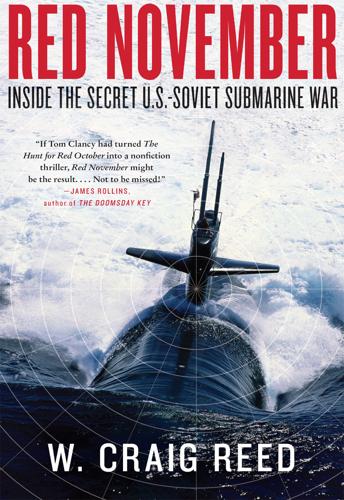
Red November: Inside the Secret U.S.-Soviet Submarine War
by
W. Craig Reed
Published 3 May 2010
Smith recalled that previous cable taps were conducted at the repeater locations, the points where two long sections join, and the signal is boosted to last through the next leg in the journey. Tapping the cable at this point seemed most efficient in the early days but came with drawbacks. Soviet cable-laying ships usually pulled cables up for spot checks at repeater locations. Should they hoist up a tap along with the cable, that’d be bad. A land-based U.S. intelligence operative had managed to obtain a section of the communications cable used by the Soviets from a Russian vendor, which allowed the NSA to examine the design and engineer a more efficient cable-tapping method.